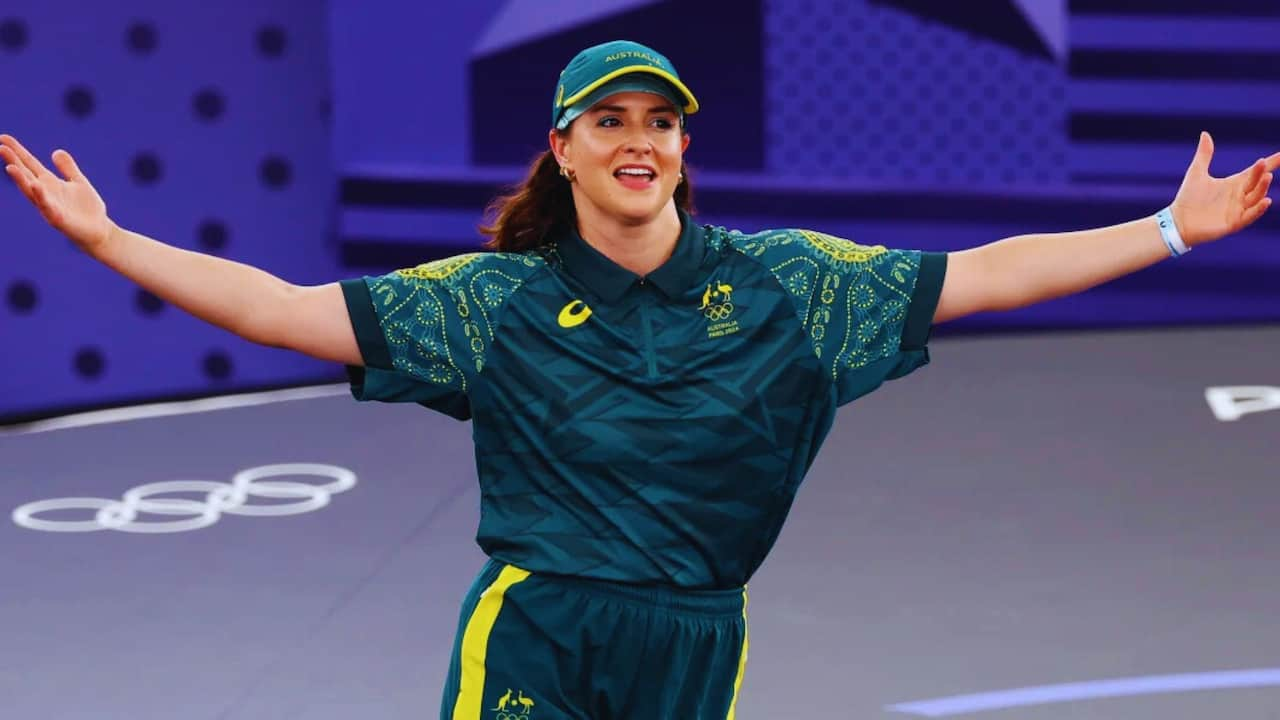Breaking Dreams: Olympic Dancer Raygun’s Emotional Farewell Amid Controversy
Rachael “Raygun” Gunn, Australia’s pioneering Olympic breakdancer, has announced her retirement from competitive breaking following an intense public backlash over her Paris Olympics performance. The announcement marks the end of a remarkable journey that saw Breaking make its historic Olympic debut.
The 37-year-old university lecturer, who became an overnight sensation for unexpected reasons, lost all three of her round-robin battles at the Place de la Concorde with a combined score of 54-0. Her unique style, which included a signature kangaroo bounce, sparked widespread attention and criticism across social media and mainstream news outlets.
“I’m not going to compete anymore,” Gunn revealed in an emotional interview with Sydney’s 2DayFM radio station. “I was going to keep competing, for sure, but I’m finding it really difficult to approach a battle now.” The former champion explained that while she continues to break dance, she now only does so “in my living room with my partner.”
The controversy surrounding Gunn’s Olympic appearance went beyond mere performance criticism. The Australian Olympic Committee (AOC) later removed an online petition that gathered 50,000 signatures and sparked unfounded conspiracy theories about her qualification process. The AOC strongly defended her selection and dismissed claims about her husband Samuel Free’s involvement in the decision-making process.
The Olympic journey of Breaking has been both brief and controversial. The sport, which originated in New York’s hip-hop scene, will not feature in the 2028 Los Angeles Games. The backlash and this development have effectively ruled out Gunn’s Olympic comeback.
Despite the negativity, Gunn maintains a resilient outlook: “I just try and stay on the positives, and that’s what gets me through,” she shared. Her legacy includes three World Championship appearances representing Australia and a victory at the Oceania Breaking Championships last year.
The incident has sparked broader discussions about:
- Traditional dance forms intersect with competitive sports.
- Social media’s impact on athletes’ mental health
- The challenges faced by pioneers in emerging Olympic sports are significant.
Looking ahead, Gunn is channeling her energy into new projects that “encourage people to dance, have fun, be creative, and be themselves.” Her story serves as a powerful reminder of the personal cost that can come with public scrutiny in the age of viral content.
While some have criticized her style as unorthodox, others have praised her courage in bringing breaking to a global platform. “You have inspired me to go out there and do something that I’ve been too shy to do,” wrote one supporter, reflecting the mixed legacy of her Olympic appearance.
The controversy has also brought up significant questions about the future of breaking in competitive sports. As a dance form rooted in creative expression, its transition to organized competition has proven challenging, with Gunn’s experience highlighting the complex balance between artistic freedom and competitive standards.
“It’s been really upsetting,” Gunn reflected. “I just didn’t have any control over how people saw me or who I was.” Her retirement marks not just the end of a competitive career but also sparks a broader conversation about the price of Olympic dreams and the impact of public scrutiny on athletic performers.
